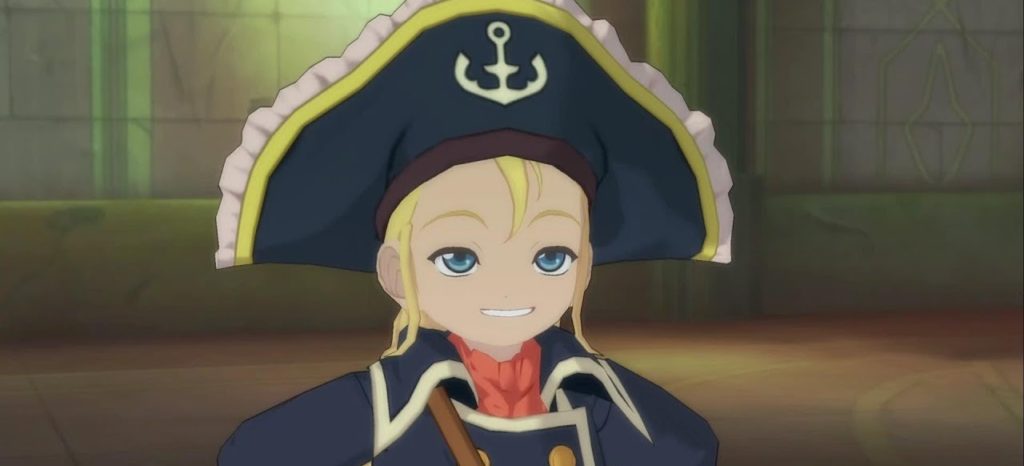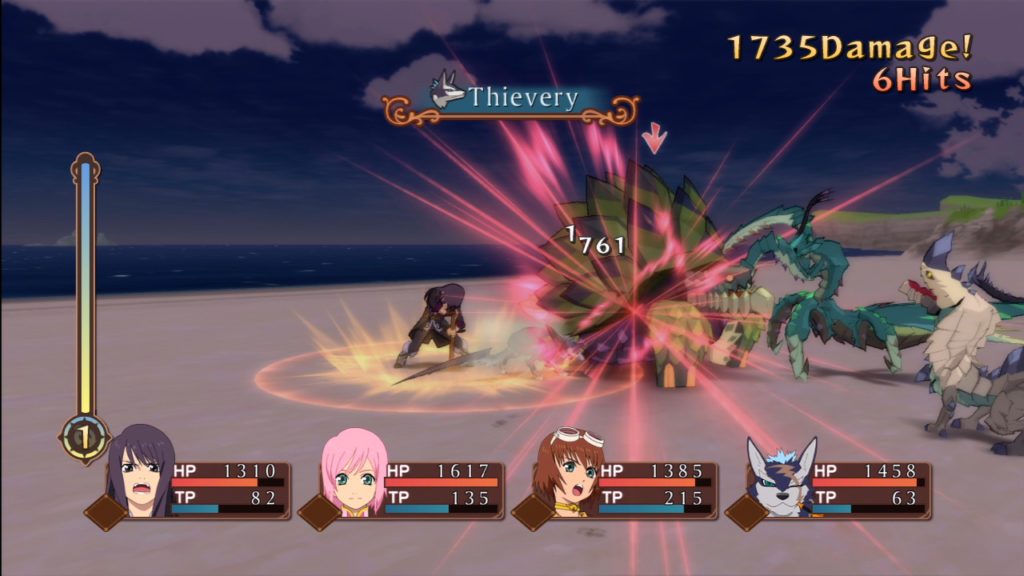Among fans, Tales of Vesperia is regarded as one of the best in its franchise, but is also perhaps one of the least played of them all. There are reasons for that: the original Tales of Vesperia released way back in 2008 as an exclusive for the Xbox 360 and its PS3 porting was only available in Japan the following year. It was hard for western fans, whom typically owned a Nintendo or Sony system, to get their hands on this jewel; yet the game was considered, for many of those who played, the highest level of the classical Tales experience. And indeed it is, even today.
Tales of Vesperia: Definitive Edition comes to show the world the strength of this game and of its franchise overall. It is, at many points, a conservative effort by Namco Bandai, it does nothing previous Tales haven’t done, and it maybe even tone down some of the complexities brought by the other highly-regarded Tales of the Abyss. The developer already tried such approach, avoiding innovation and sticking to classical roots with Tales of Legendia, but the result of that time was a only a decent game. Not this time around though.
In a way, every classical Tales element is brought to its highest level ever with Tales of Vesperia. It is a technical improvement over every past game of its franchise and also an artistic achievement. Classical combat? The best version of it. Interesting side-quests? Dozens of them and all of them giving you a great time. Save the world story? Yup, with three major arcs that could be their very own JRPG. Fun characters? Definitely, with a great lead and funny anime tropes as always. It doesn’t risk a different combat system as Tales of Graces, or a different setting as Tales of Xillia, much less a complete overhaul as in Tales of Zestiria. It is, I could say, the natural improvement over the amazing Tales of Symphonia and Tales of the Abyss.
Wait, but I don’t know what a Tales game is!!!
Oh, sorry. I’ve mentioned a lot of Tales references, but it is not that hard. Tales games have always been the classical anime experience of JRPGs. Even back in the Playstation 1, while games such as Breath of Fire offered a more serious artwork with medieval badasses or Xenogears gave us massive mechas, Tales was a game about a bunch of big-eyed youngsters saving the world in a colorful high fantasy setting filled with magic, spirits, and chubby monsters. Its cast was always about a bunch of people following japanese character tropes such as a happy kid, nerdy mage, sexy femme fatale, and so on, all of them being fully explored with a LOT of dialogue, conversations, side-quests, and through the main story as well.
In a way Tales was always about picking these traditional anime elements and honing them into a character-driven experience as you fight monsters in a real-time action RPG combat. It is simple, but surprisingly catching and fun.
And what about the “Definitive Edition”?
Well, the Definitive Edition of Tales of Vesperia means it has everything that was released since the game originally launched in 2008. New costumes for your characters? Yup. Patches and bug fixes? Not much, Tales always released without needing such things anyway. The real thing, however, comes with the content only available in the japanese release of the game for the PS3: a completely new character, an important ally becoming playable, and the addition of a new post-game dungeon, new mini-games, new side-quests, new bosses, and everything else that comes along with it.
The new character, Patty, is perhaps the major Definitive Edition’s asset. She is not only a new kid to play in combat, she is truly part of the cast and her presence means a lot of cutscenes of the game were changed to fit her, some small new events happen to give her shinning time, and she comes with a whole bunch of new equipment and unique artes and skills. It is amazing to see how a released game came around doing these mid-story changes just to fit a new ally. She really brings a lot for those who have already played the game and is part of the natural flow of the story for those who are playing it for the first time.

It is also remastered to 4K and with 60fps (depending on the platform), but really, these are just minor things because the original Tales was already a marvelous piece of art with its anime-like graphics, colorful textures, and classical sound direction. But oh, you should play it with japanese audio, remember that.
The game itself
I said Tales of Vesperia is a classic Tales experience, let me elaborate on these now. Its story starts as Yuri, a former knight from the slums, tries to recover the blastia (some kind of energy source) that was stolen from the poor neighborhood where he lives. Yuri is a good guy, but also a guy with a questionable sense of justice, so he thinks he can take back what was stolen and just deal with it. This simple mission, however, ends up putting him along with runaway royal-successor Estellise and slowly unfolds into a massive plot clashing the empire, the free guilds, and greedy bastards trying to control the next emperor. Yeah. It really grows in scope with each of the game’s three big and dense arcs.
Your crew gets the addition of a lot of interesting people too: Yuri’s own super-intelligent dog Repede, genius mage (and I mean really genius) Rita, coward-but-trying-too-hard young Carol, sexy vengeful carefree Judith, tired old-man rogue Raven, incredible-mature pirate kid Patty, and boringly righteous paladin Flynn. You have them travel through a traditional JRPG world map, you can control every one of them in combat, you can equip them, set skills to make them tougher and more interesting, watch them talk to each other through skits (simple optional conversations about things you might experience during the game), and so on.

It is a dense game though
The original Vesperia already packed a lot of content. It had a massive amount of side-quests, the main story was big enough, and it offered some post-game content to keep your journey going for much more than 100 hours. Simply playing through the game doing some exploration alone could already make it pack more than 70 hours of dense gameplay, meaning most of it was filled with cutscenes, conversations, and combat. There is very little running around mindlessly here, unless you really wish to complete the game with missable side-quests, some requiring backtracking and re-entering old places.
The Definite Edition comes to put even more material in the game. Although the main story is still largely the same, the post-game has a big new dungeon, a new snow-boarding mini game, and you are likely to spend a lot more time collecting things for Patty and Flynn. A completionist can easily dig hundreds of hours in the game, especially since it offers the new game plus with grade system as usual in the franchise.
Final Score
 (4.3 / 5)
(4.3 / 5)
This is one of best Tales games. Simple as that. Many may argue which is the best in the franchise, but Tales of Vesperia is a solid contender in this discussion, especially because it is such a great game by simply mastering every classical Tales element. It has a lot of things to do, an amazing group of characters, a solid main plot, an ever-enjoyable combat system, and it is one of most beautiful Tales game ever made.
If you missed it in 2008, pick it. It is a 11-year old game, but still kicks the butt of most JRPGs released since then. If you played it way back, play it again.
Summary
-
Production
-
Replay Value/Content
-
Polish
-
Setting
-
Fun

What’s up to every body, it’s my first visit of this web site; this blog consists of amazing and really
fine information in support of readers.
Woah! I’m really enjoying the template/theme of this website.
It’s simple, yet effective. A lot of times it’s hard to get that “perfect balance” between usability and visual
appearance. I must say that you’ve done a great job with
this. Additionally, the blog loads very fast for me on Safari.
Superb Blog!